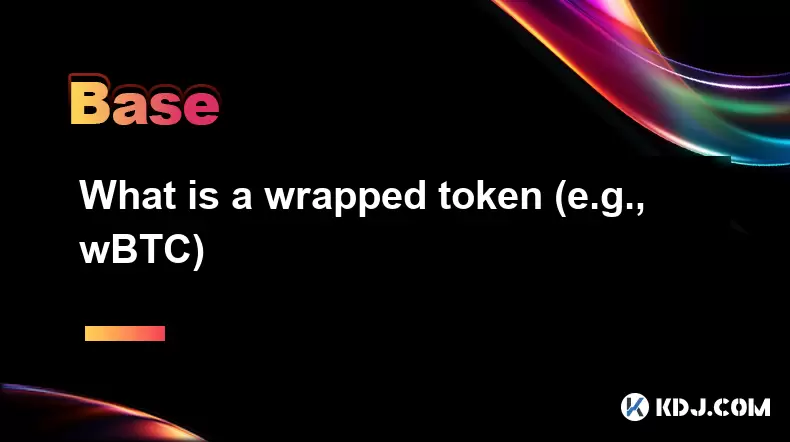-
 Bitcoin
Bitcoin $118,698.3676
0.16% -
 Ethereum
Ethereum $3,428.4877
5.97% -
 XRP
XRP $3.2496
9.52% -
 Tether USDt
Tether USDt $1.0002
0.00% -
 BNB
BNB $725.6930
4.36% -
 Solana
Solana $174.8923
4.52% -
 USDC
USDC $0.9997
-0.02% -
 Dogecoin
Dogecoin $0.2139
6.02% -
 TRON
TRON $0.3155
4.62% -
 Cardano
Cardano $0.8045
7.12% -
 Hyperliquid
Hyperliquid $46.6582
-1.72% -
 Stellar
Stellar $0.4676
0.80% -
 Sui
Sui $4.0143
0.38% -
 Chainlink
Chainlink $17.1546
2.97% -
 Hedera
Hedera $0.2458
3.27% -
 Bitcoin Cash
Bitcoin Cash $496.5967
-0.06% -
 Avalanche
Avalanche $22.8813
3.13% -
 Shiba Inu
Shiba Inu $0.0...01439
3.42% -
 UNUS SED LEO
UNUS SED LEO $8.8389
0.42% -
 Toncoin
Toncoin $3.2113
2.82% -
 Litecoin
Litecoin $101.2646
4.24% -
 Polkadot
Polkadot $4.2262
2.32% -
 Monero
Monero $340.4295
2.92% -
 Pepe
Pepe $0.0...01365
2.92% -
 Uniswap
Uniswap $8.9702
-2.78% -
 Bitget Token
Bitget Token $4.7675
2.00% -
 Dai
Dai $0.9998
-0.02% -
 Ethena USDe
Ethena USDe $1.0003
-0.04% -
 Aave
Aave $324.6394
-2.11% -
 Bittensor
Bittensor $433.6051
-0.88%
What is a wrapped token (e.g., wBTC)
Wrapped tokens like wBTC enable cross-chain interoperability, allowing assets to be used in different blockchain ecosystems while maintaining a 1:1 peg with the original asset.
Jul 12, 2025 at 08:07 pm

What Is a Wrapped Token?
A wrapped token is a type of cryptocurrency that represents another asset on a different blockchain. It's essentially a tokenized version of an underlying cryptocurrency, allowing it to be used in ecosystems where the original asset isn't natively supported. For example, wBTC (Wrapped Bitcoin) enables Bitcoin holders to use their BTC on the Ethereum network for decentralized finance (DeFi) applications.
The concept of wrapping tokens emerged to address interoperability issues between blockchains. Since each blockchain operates independently with its own set of rules and standards, assets from one chain can’t directly interact with another. By creating wrapped versions of native assets, users gain access to cross-chain functionalities without needing to convert their holdings into other cryptocurrencies.
How Does Wrapping Work? A Technical Overview
Wrapping involves locking the original asset in a smart contract or custodial vault and minting an equivalent amount of the wrapped token on the target blockchain. In the case of wBTC, when a user deposits BTC, a corresponding amount of wBTC is issued on Ethereum.
- The user sends BTC to a custodian or smart contract.
- The custodian verifies the deposit and mints the equivalent wBTC on Ethereum.
- The newly minted wBTC is sent to the user’s Ethereum wallet.
- When unwrapping, the process reverses: wBTC is burned, and the original BTC is released back to the user.
This system ensures a 1:1 peg between the wrapped token and the original asset. Smart contracts and custodians play critical roles in maintaining this parity, though they also introduce centralization risks depending on the implementation model.
The Role of Custodians and Smart Contracts
In many wrapped token systems, custodians are responsible for holding the original asset and ensuring accurate issuance of wrapped tokens. These entities must be trusted to securely manage reserves and provide transparency through audits and proof-of-reserves.
Alternatively, some protocols use smart contracts to automate the wrapping process without relying on centralized intermediaries. These contracts hold the original asset and issue wrapped tokens programmatically. While this approach enhances decentralization, it still requires trust in the code and security of the contract itself.
Both models have trade-offs:
- Custodial models may offer faster processing but rely on centralized entities.
- Smart contract-based systems increase decentralization but may face scalability or complexity challenges.
Users should carefully evaluate the trust assumptions before interacting with any wrapped token platform.
Use Cases for Wrapped Tokens in DeFi and Beyond
Wrapped tokens open up a wide range of possibilities within decentralized finance (DeFi). For instance, wBTC allows Bitcoin holders to participate in yield farming, lending, and liquidity pools on Ethereum-based platforms like Uniswap or Aave.
- Users can supply wBTC as collateral for loans on lending protocols.
- Liquidity providers can add wBTC to trading pairs on decentralized exchanges.
- Yield farmers can stake wBTC in various DeFi protocols to earn interest or governance tokens.
Beyond DeFi, wrapped tokens facilitate cross-chain communication and enable multi-chain applications. They allow developers to build services that integrate assets from multiple chains, enhancing functionality and user experience across ecosystems.
Security Considerations and Risks Involved
While wrapped tokens provide utility, they come with inherent risks. The most notable include counterparty risk, smart contract vulnerabilities, and liquidity fragmentation.
- Counterparty Risk: If a custodian becomes insolvent or malicious, users could lose their assets. Regular audits and transparent reserve reports help mitigate this concern.
- Smart Contract Risk: Bugs or exploits in the wrapping protocol can lead to loss of funds. Open-source code and third-party audits reduce but do not eliminate these dangers.
- Liquidity Fragmentation: Wrapped tokens may trade at slight premiums or discounts due to varying demand across chains. Arbitrage opportunities arise, but they can also create inefficiencies.
Users must weigh these risks against the benefits before engaging with wrapped tokens. Choosing well-audited and widely adopted wrapped assets like wBTC can provide a safer entry point compared to lesser-known alternatives.
Frequently Asked Questions (FAQs)
Q1: Can I wrap any cryptocurrency?
Not all cryptocurrencies support wrapping. Only those with compatible infrastructure and sufficient demand typically have wrapped versions. Popular examples include wBTC, wETH, and renDOGE.
Q2: How do I unwrap a wrapped token?
To unwrap, you initiate a burn transaction of the wrapped token and receive the original asset in return. This process usually happens via the same platform or custodian that issued the wrapped token.
Q3: Are wrapped tokens considered stablecoins?
No, wrapped tokens are not stablecoins. Stablecoins are pegged to fiat currencies like USD, while wrapped tokens maintain a 1:1 value with another cryptocurrency such as Bitcoin.
Q4: Do wrapped tokens earn mining rewards or staking yields?
Wrapped tokens themselves do not generate mining or staking rewards. The underlying asset might earn such rewards if it supports them, but those benefits are generally not passed through to the wrapped version.
Disclaimer:info@kdj.com
The information provided is not trading advice. kdj.com does not assume any responsibility for any investments made based on the information provided in this article. Cryptocurrencies are highly volatile and it is highly recommended that you invest with caution after thorough research!
If you believe that the content used on this website infringes your copyright, please contact us immediately (info@kdj.com) and we will delete it promptly.
- Winning Design: Nine-Year-Old's Art Becomes a Chocolate Coin!
- 2025-07-18 01:10:12
- Bitcoin, Market Cap & Strategy: Decoding the Crypto Game in 2025
- 2025-07-18 01:10:12
- Plume and Colb Finance: Tokenizing Pre-IPO Equities for the Blockchain Era
- 2025-07-18 00:35:12
- Bitcoin's Bull Run: Can It Break Through the Bearish Sentiment?
- 2025-07-18 00:35:12
- Silver Breaks 14-Year High: What's Driving the Rally?
- 2025-07-17 22:50:13
- Ozak AI, Stellar (XLM), and Solana (SOL): The New Crypto Watchlist Stars
- 2025-07-17 23:50:12
Related knowledge

What is the Bitcoin dominance index
Jul 12,2025 at 10:35pm
Understanding the Bitcoin Dominance IndexThe Bitcoin Dominance Index, often abbreviated as BTC.D, is a metric used to measure Bitcoin's market capital...

What is the Bitcoin dominance index
Jul 11,2025 at 04:29am
What is the Bitcoin Dominance Index?The Bitcoin Dominance Index is a metric used to gauge Bitcoin's market capitalization relative to the total market...

Can crypto be a hedge against inflation
Jul 14,2025 at 12:21am
Understanding the Concept of Hedging Against InflationInflation refers to the general increase in prices and fall in the purchasing value of money ove...

Can crypto be a hedge against inflation
Jul 12,2025 at 12:07pm
Understanding the Role of Blockchain in Decentralized Finance (DeFi)Blockchain technology serves as the backbone of decentralized finance, offering a ...

What are account abstraction wallets
Jul 13,2025 at 01:43am
Understanding the Concept of Account AbstractionAccount abstraction is a term frequently used in the Ethereum ecosystem, particularly within discussio...

What does "gas limit" vs "gas price" mean
Jul 13,2025 at 04:00am
Understanding the Basics of Gas in Blockchain TransactionsIn the Ethereum and other EVM-compatible blockchains, every transaction requires computation...

What is the Bitcoin dominance index
Jul 12,2025 at 10:35pm
Understanding the Bitcoin Dominance IndexThe Bitcoin Dominance Index, often abbreviated as BTC.D, is a metric used to measure Bitcoin's market capital...

What is the Bitcoin dominance index
Jul 11,2025 at 04:29am
What is the Bitcoin Dominance Index?The Bitcoin Dominance Index is a metric used to gauge Bitcoin's market capitalization relative to the total market...

Can crypto be a hedge against inflation
Jul 14,2025 at 12:21am
Understanding the Concept of Hedging Against InflationInflation refers to the general increase in prices and fall in the purchasing value of money ove...

Can crypto be a hedge against inflation
Jul 12,2025 at 12:07pm
Understanding the Role of Blockchain in Decentralized Finance (DeFi)Blockchain technology serves as the backbone of decentralized finance, offering a ...

What are account abstraction wallets
Jul 13,2025 at 01:43am
Understanding the Concept of Account AbstractionAccount abstraction is a term frequently used in the Ethereum ecosystem, particularly within discussio...

What does "gas limit" vs "gas price" mean
Jul 13,2025 at 04:00am
Understanding the Basics of Gas in Blockchain TransactionsIn the Ethereum and other EVM-compatible blockchains, every transaction requires computation...
See all articles

























































































